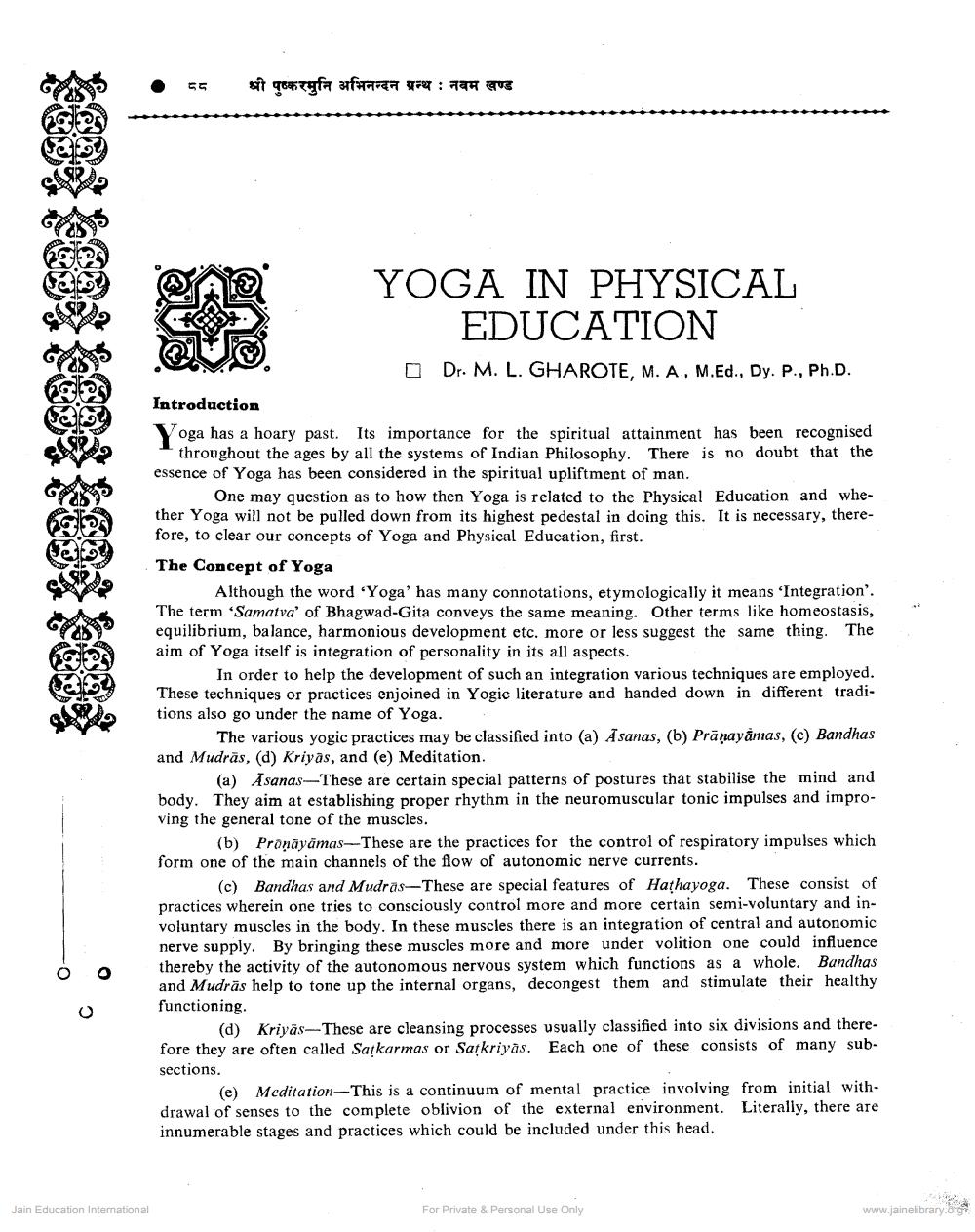________________
Jain Education International
८८
श्री पुष्करमुनि अभिनन्दन ग्रन्थ : नवम खण्ड
YOGA IN PHYSICAL EDUCATION
Dr. M. L. GHAROTE, M. A, M.Ed., Dy. P., Ph.D.
Introduction
Yoga has a hoary past. Its importance for the spiritual attainment has been recognised
throughout the ages by all the systems of Indian Philosophy. There is no doubt that the essence of Yoga has been considered in the spiritual upliftment of man.
One may question as to how then Yoga is related to the Physical Education and whether Yoga will not be pulled down from its highest pedestal in doing this. It is necessary, therefore, to clear our concepts of Yoga and Physical Education, first.
The Concept of Yoga
Although the word 'Yoga' has many connotations, etymologically it means 'Integration'. The term 'Samatva' of Bhagwad-Gita conveys the same meaning. Other terms like homeostasis, equilibrium, balance, harmonious development etc. more or less suggest the same thing. The aim of Yoga itself is integration of personality in its all aspects.
In order to help the development of such an integration various techniques are employed. These techniques or practices enjoined in Yogic literature and handed down in different traditions also go under the name of Yoga.
The various yogic practices may be classified into (a) Asanas, (b) Pranayamas, (c) Bandhas and Mudras, (d) Kriyas, and (e) Meditation.
(a) Asanas-These are certain special patterns of postures that stabilise the mind and body. They aim at establishing proper rhythm in the neuromuscular tonic impulses and improving the general tone of the muscles.
(b) Pranayamas-These are the practices for the control of respiratory impulses which form one of the main channels of the flow of autonomic nerve currents.
(c) Bandhas and Mudras-These are special features of Hathayoga. These consist of practices wherein one tries to consciously control more and more certain semi-voluntary and involuntary muscles in the body. In these muscles there is an integration of central and autonomic nerve supply. By bringing these muscles more and more under volition one could influence thereby the activity of the autonomous nervous system which functions as a whole. Bandhas and Mudrās help to tone up the internal organs, decongest them and stimulate their healthy functioning.
(d) Kriyas-These are cleansing processes usually classified into six divisions and therefore they are often called Satkarmas or Saṭkriyas. Each one of these consists of many subsections.
(e) Meditation-This is a continuum of mental practice involving from initial withdrawal of senses to the complete oblivion of the external environment. Literally, there are innumerable stages and practices which could be included under this head.
For Private & Personal Use Only
www.jainelibrary.org




